Indie Monthly: June 2025
I didn't choose the Indie life, the Indie life chose me

Summer is usually a bit on the slow side, but this June was an active one. We've got seven games on display this month, showcasing a fair variety. There's a definite theme of dream realms and fantastic worlds, but beyond that, you have genres ranging from ARPG to puzzle platformers to old-school adventure. I'm sure that whatever's to your taste, you'll find it here.
As always, you can see the games in action here.
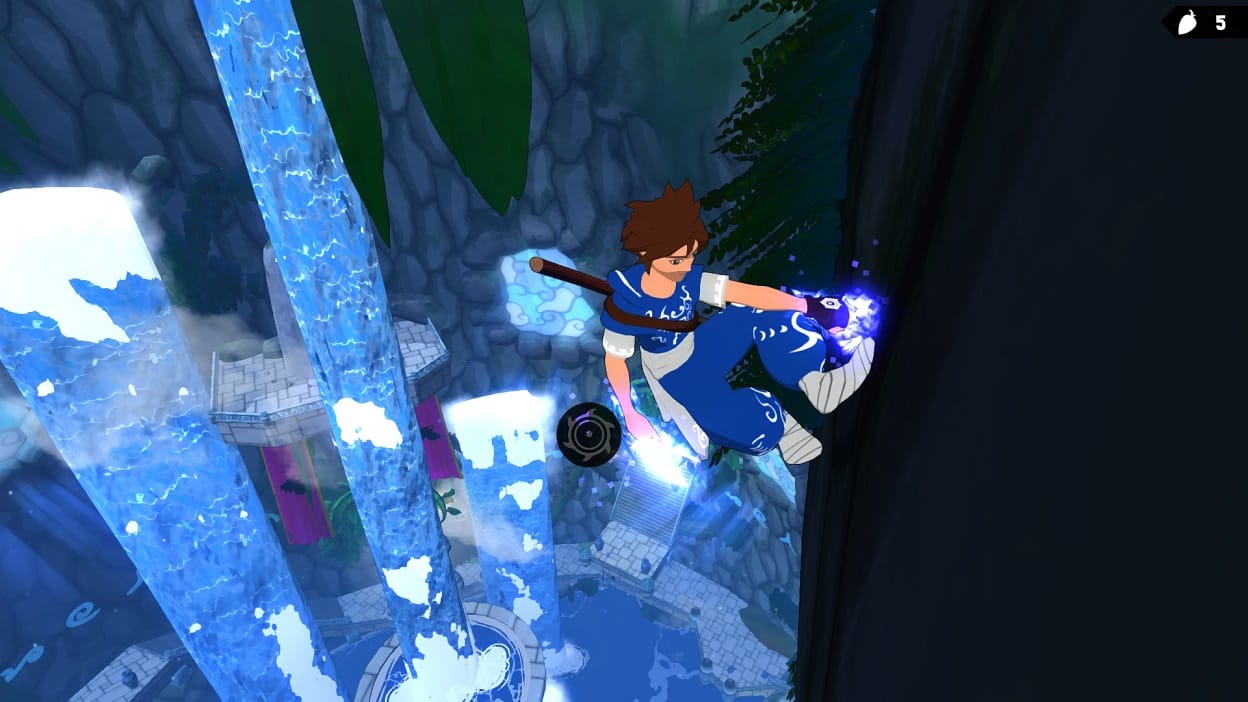
Zefyr: A Thief's Melody
Zefyr: A Thief's Melody is an action-adventure game with stealth elements. It's a real love letter to the gameplay and graphics of games from the 2000s, with Wind Waker being a particularly obvious inspiration.
The game follows the career of a young man from a remote archipelago, aspiring to enter the Thieves' Guild. Once an order of actual thieves, ages of tranquility have turned the Guild into a group of explorers, fortune seekers, and errant problem solvers. But when a previously dormant rival band of pirates begins raiding the islands again, the Guild is called upon to get to the bottom of their misdeeds.
Zefyr is something of a hybrid, featuring elements of 3D platformers, adventure, and stealth games. Missions are varied, but most demand a combination of sneaking and platforming skills. Areas are very vertically oriented to take advantage of the protagonist's climbing skills, a key talent that the player will unlock right away. The character can stick to almost any wall indefinitely and then travel in any direction for a limited distance, allowing them to find alternate routes to many locations.
Stealth is a fairly basic affair; the sight lines for guards become visible once they spot the player, offering a short window to get out of sight before they go on alert. Fighting guards head-on is possible, but the protagonist isn't much of a fighter, and many guards have special weaponry that makes combat extremely unwise. Most of the protagonist's gear is designed more around distraction anyway, so outside of a handful of bosses, fighting is really not recommended.
While Zefyr starts as a fairly linear game, it eventually opens up into something far more exploration-oriented, with the protagonist gaining transportation options that allow for island hopping. This is very much tied into the flow of the game. There is a main questline, but Zefyr is more invested in its many sidequests. It's a game made more for people who like to wander rather than those seeking a tight story campaign.
Overall, Zefyr is a game with design principles that match its early 2000s-era aesthetics. It's a solid choice for fans of any of its precursors, but don't expect to see too many new ideas in the mix.
Zefyr: A Thief's Melody is available for PC via Steam, Itch and Game Jolt. A copy was provided for this review.
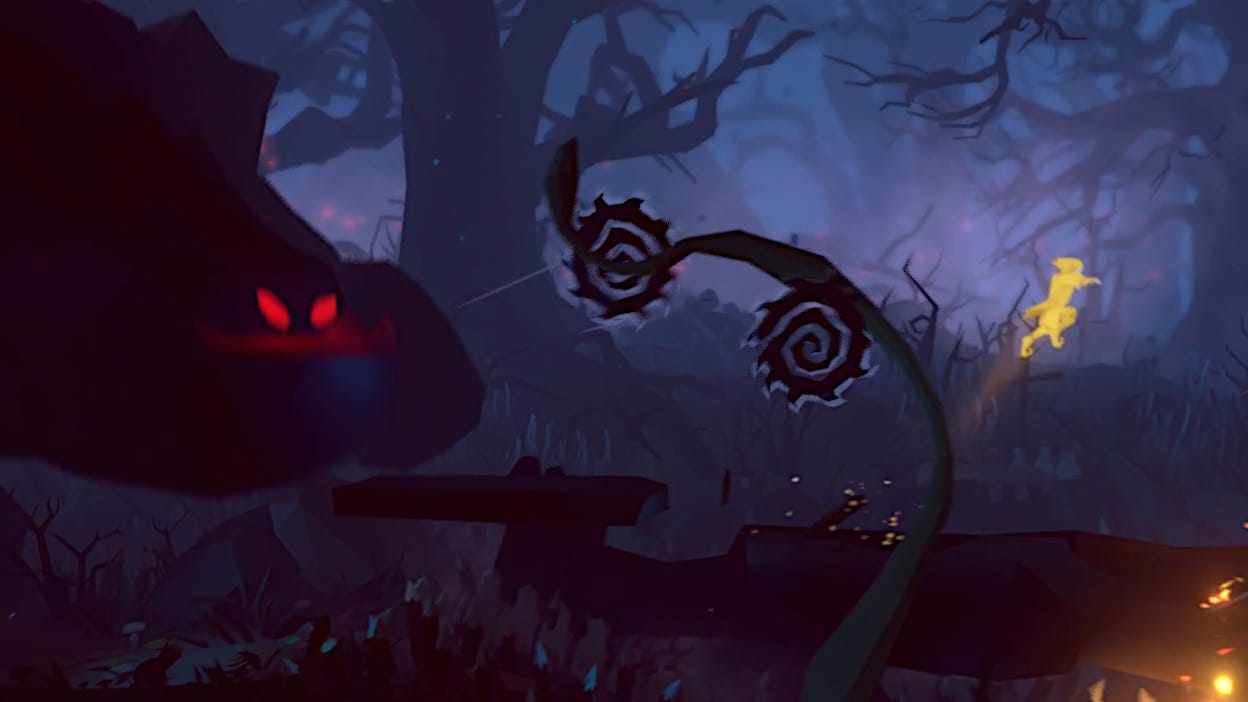
Through the Nightmares
Through the Nightmares is a difficult precision platformer with light physics elements. The design is built around a novel size-shifting mechanic that really separates the gameplay from the competition.
Something has gone awry in the world of dreams. Morpheus, the lord of sleep, has abruptly begun abducting children, confining them within prisons of nightmares. As the Sandman, bringer of good dreams, your task is to rescue those captive children and ultimately find the source of the madness of Morpheus.
Through the Nightmares is divided into a series of discrete levels, each relatively short, generally taking one to two minutes to finish, with boss chase levels running a bit longer. Of course, as with any technical platformer, one shouldn't expect to finish any given level in a single try. This is especially true when pursuing optional objectives, such as finding hidden objects or finishing a level without using checkpoints.
The key mechanic is the Sandman's ability to change the size of his body at will. Holding a button will cause the protagonist to shrink, reducing his stature and mass. Aside from the obvious function of allowing him to get through smaller passages, this also affects the height and trajectory of his jump as well as how surfaces react when he walks across them. More complex puzzles demand that the player rapidly change size back and forth, turning this into the primary feature distinguishing the game from other difficult platformers.
Aside from this mechanical gimmick, Through the Nightmares is also set apart by its visual design. Stories set in dream worlds always offer the freedom to explore bizarre aesthetics, and in this case, the main themes are childhood fears. The different areas are surreal while also following some common narrative threads, avoiding the cliches we see with some other dream-themed games.
Overall, Through the Nightmares is a visually and mechanically distinctive game that's an easy pick for anyone who loves challenging platformers.
Through the Nightmares is available for PC via Steam, on PlayStation consoles, Xbox consoles and Nintendo Switch. A copy was provided for review.
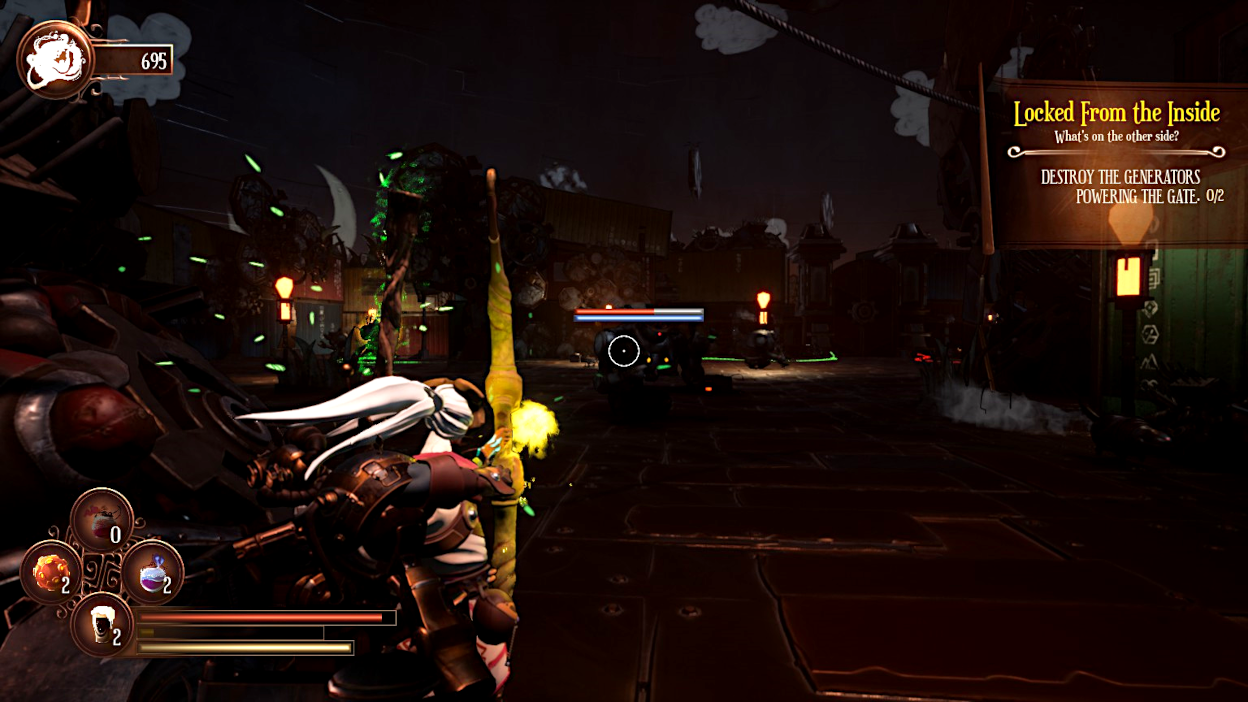
Bygone Dreams
Bygone Dreams is a high fantasy action RPG. It's a well-made example of the subgenre, though without anything groundbreaking.
A young warrior named Wa awakens to the sight of Aelona, the prime deity of his realm. In the last moments before she fades from view, she tells him that their world - the dream realm of Lune - is being threatened by a new nightmare, and Wa is their last chance to stop it. His task is to track down the guardians of Lune, but the world is already fracturing, and none of the guardians are themselves. One way or another, Wa will have to rally their support before Lune is swallowed by the darkness.
The core mechanics of Bygone Dreams should be familiar to fans of the subgenre - combat built around combinations of light and heavy attacks, with defense tied to either parries or dodges, depending on player preference. Wa quickly finds a bow for ranged combat, and he also acquires one-sh0t items and magic for additional effects, but most combat is hand-to-hand.
Melee combat is less forgiving here than in some comparable games. Wa has access to a range of weapons that feel very different to use, but all of them have a lot of momentum, so combat will feel a little slower than you might be used to. Wa is also limited by a stamina meter that drains quickly when using melee combos and dodges. This means that some cheaper tactics aren't so viable and, combined with the slower pace of attacks, require every blow to count. Add in the hard-hitting enemies, and you have a highly challenging game, though veterans of the Souls games will be able to adapt without much of a problem.
The aesthetic design is particularly noteworthy; each area has a distinctive feel, with some highly original theming and a lot of detail. The music fits nicely with the visuals, and the game punches well above its weight in terms of presentation.
Overall, Bygone Dreams is an attractive, if somewhat standard, addition to the crowded action RPG market. It's a solid choice for anyone looking for something a little different than what you get from AAA companies.
Bygone Dreams is available for PC via Steam. A copy was provided for this review.
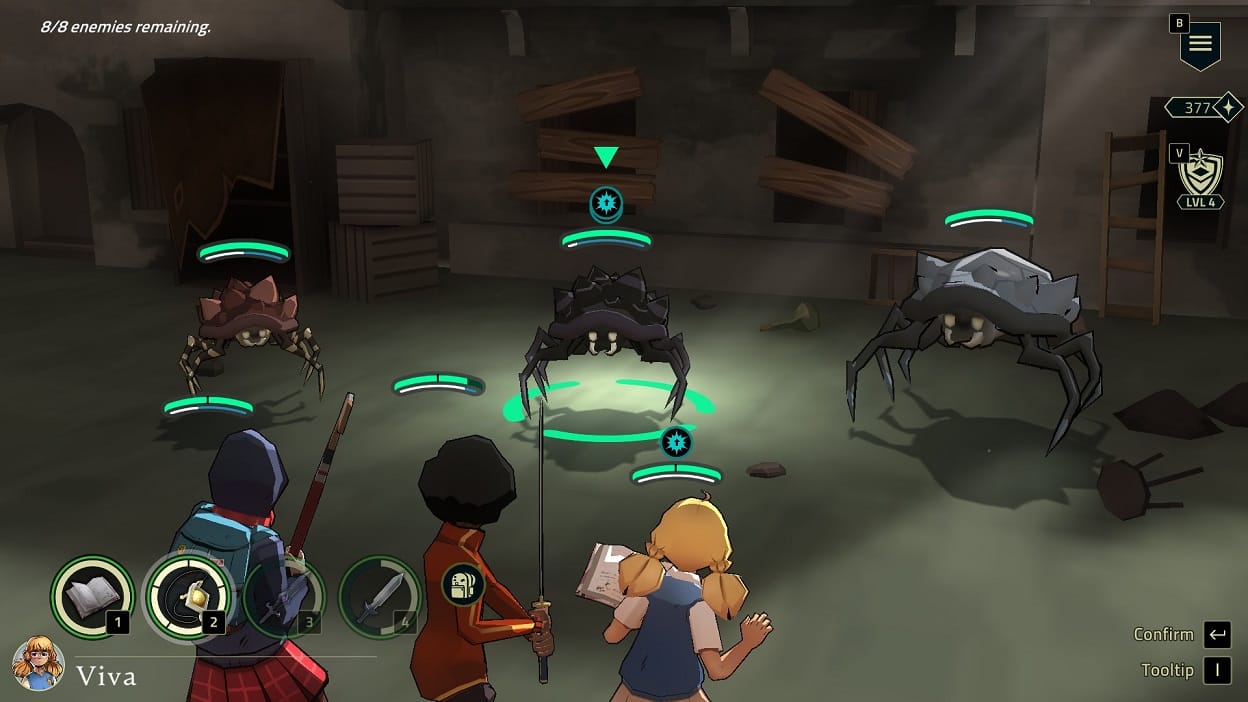
Grifford Academy
Grifford Academy is a turn-based RPG with highly streamlined mechanics. It's designed for less experienced players, but there's also plenty of challenge for anyone who wants to test their RPG skills.
The titular Academy is an ordinary school housing a strange secret. Within the library are books that write and unwrite themselves, telling the story of Caldria, a kingdom that never existed. Erika, a student at the Academy, finds one of these books and is pulled into the land of Caldria along with her brother and several classmates. Now trapped in a world overrun with aggressive monsters, she must find her brother and get to the bottom of Caldria's woes.
Combat in Grifford Academy is turn-based with staggered turns, similar to active time battle but without the fight constantly advancing. Each party member carries four pieces of equipment, with each item corresponding to a combat action. The first slot is always reserved for a character-specific piece of equipment that scales to the party's level, but the other three are unrestricted, and the player can always sell gear for 100% of the purchase price. Characters are slightly specialized in certain types of equipment, but there's still a lot of room for customization.
Outside of combat, the gameplay is greatly simplified and streamlined. There's no free overworld exploration - combat areas are purely combat, while towns contain only areas of interest. Grifford Academy is also a grind-free experience, with the party leveling up at key story moments.
The simplification of the gameplay, combined with the story and aesthetics, may lead you to believe that this is a game for beginners, and by default, this is true. However, set the game to strategy mode - the elevated difficulty level - and it becomes a far more challenging experience. Winning fights in strategy mode demands a more careful approach, managing status conditions and cooldowns, and even adjusting equipment to counteract more difficult enemy arrangements.
Overall, Grifford Academy is a solid RPG experience that can appeal to neophytes and experts alike.
Grifford Academy is available for PC via Steam. A copy was provided for this review.
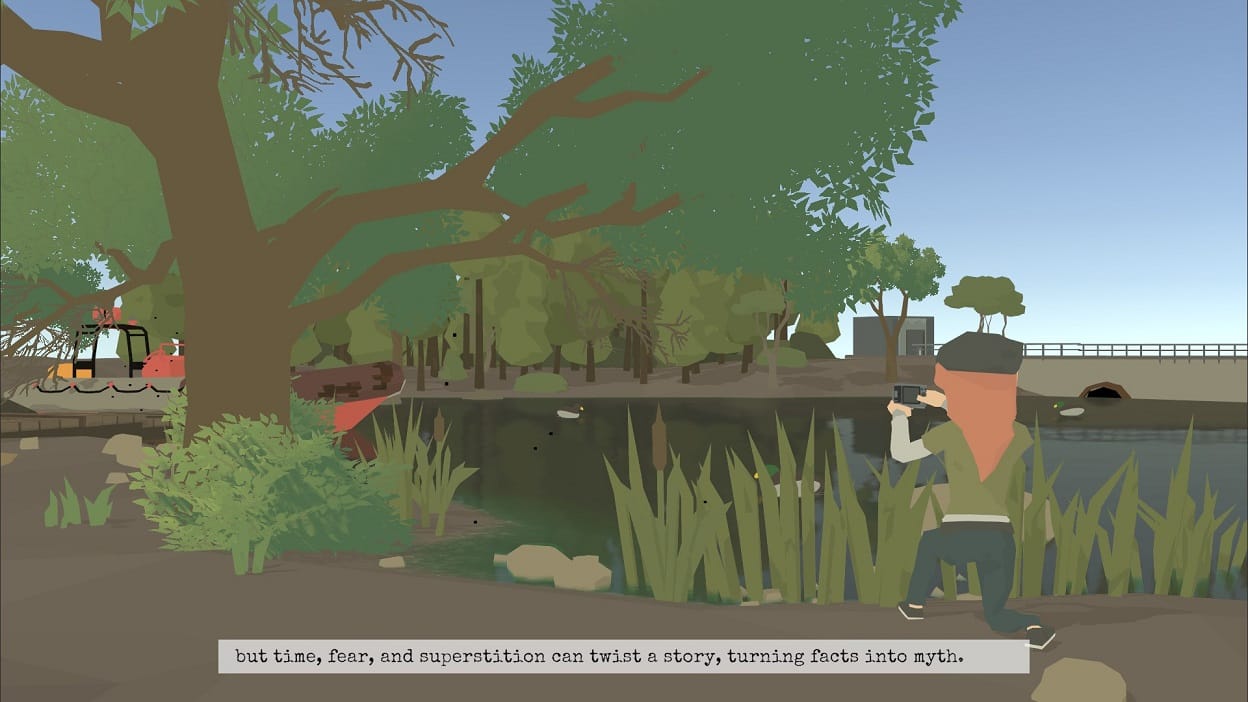
Cantaloupe Chronicle
Cantaloupe Chronicle is an adventure game centered around the nuts and bolts of newspaper journalism. It's an unorthodox frame for gameplay that will be instantly recognizable to anyone experienced with 90s PC adventure games.
You are a young, hungry journalist headed off to your first real job - cub reporter for your aunt's newspaper in the tiny town of Cantaloupe. It's not thrilling work, but it's an opportunity to learn the basics of the trade in a low-pressure environment. However, Cantaloupe has something of a secret history, one involving classified military projects and an unidentified corpse. You're probably not going to get to the bottom of the town's history, but every rock you turn over is a chance to bring some secret to light.
Cantaloupe Chronicle is an old-school adventure game with a narrative twist - the puzzles focus on the mechanics of reporting. The player has a daily task, usually focused on getting the facts of some mundane local controversy. After the first day, there's also an ongoing objective based on researching the town's hidden history. The primary objective requires going through the process of reporting - gathering background, taking photographs, coming up with a hook, and then assembling it all into a finished article.
While there are a few novel mechanics, this is still a definite throwback game, and that means experiencing some vintage adventure game puzzles. Each day requires the protagonist to solve at least one extended puzzle built around finding and combining items. Expect some of the solutions to be a bit off the wall - the unorthodox story doesn't spare you the moon logic. On the bright side, Cantaloupe Chronicle has a few built-in features that make these puzzles more manageable, including a hot-spot locator and a helpful (if intentionally cryptic) hint system.
Overall, Cantaloupe Chronicle is definitely for fans of the computer adventure games of yesteryear. Others might find it a little too old-school, even with the somewhat interesting narrative.
Cantaloupe Chronicle is available for PC via Steam. A copy was provided for this review.
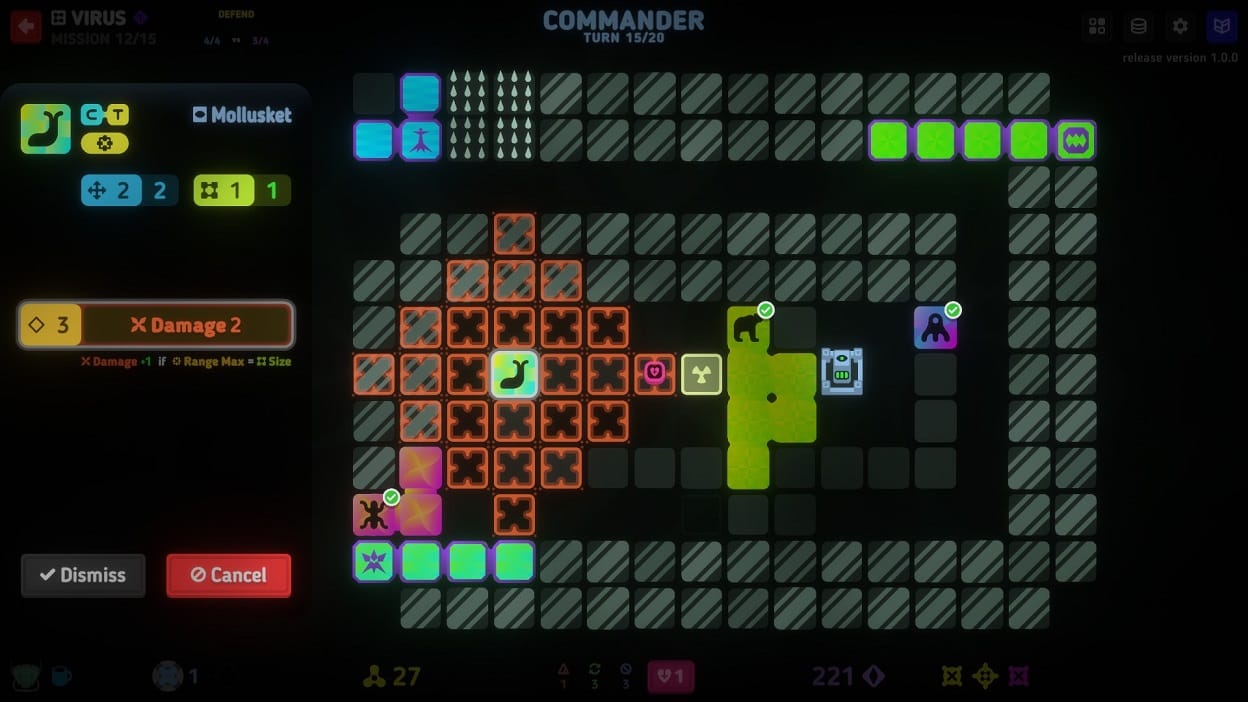
Cell Command
Cell Command is a biology-themed roguelike strategy game. It features a deceptively complex unit-building system that's bound to take players a while to really understand.
The player's forces in Cell Command are built up from base nucleotides, serving as melee, ranged, or support based on the combination used. These units grow as they move across tiles, eventually reaching a maximum length determined by unit type and any enhancers equipped to the cell. Aside from the obvious tactical element, this also determines the unit's life. This means that units effectively heal themselves every round, and larger cells may require coordinated attacks to take down.
Each run lasts for fifteen standard fights ending in a boss match. The standard fights have varied objectives - destroying all of the enemy cells always wins, but some types have alternate win and loss conditions, such as destroying or defending stationary targets or lasting a certain number of turns.
Finishing a fight earns the player biomass, used to unlock upgrades for individual cells, and science, used to unlock permanent run-to-run bonuses. The player is also occasionally required to take on a mutation, which changes the nature of units in all future fights. This usually makes those fights harder, though a clever player can use mutations to control what units the enemy can dispatch.
This system offers a lot of potential for interesting builds, but the learning curve is quite brutal, even by the standards of roguelike games. Cells tend to have traits based on their nucleotides, such as cytosine yielding cells with ranged attacks, but combinations can be unpredictable. Until all the combos have been unlocked, a player can easily turn a frontline fighter into a non-combatant healer by mistake. Add in the unorthodox positioning system and the large number of unit traits and gimmicks, and it may take a bit of time getting to grips with everything.
Overall, Cell Command is a game for people who are comfortable with complexity and willing to try and die a few times. Those wanting a more conventional roguelike experience may want to look elsewhere.
Cell Command is available for PC via Steam. A copy was provided for this review.
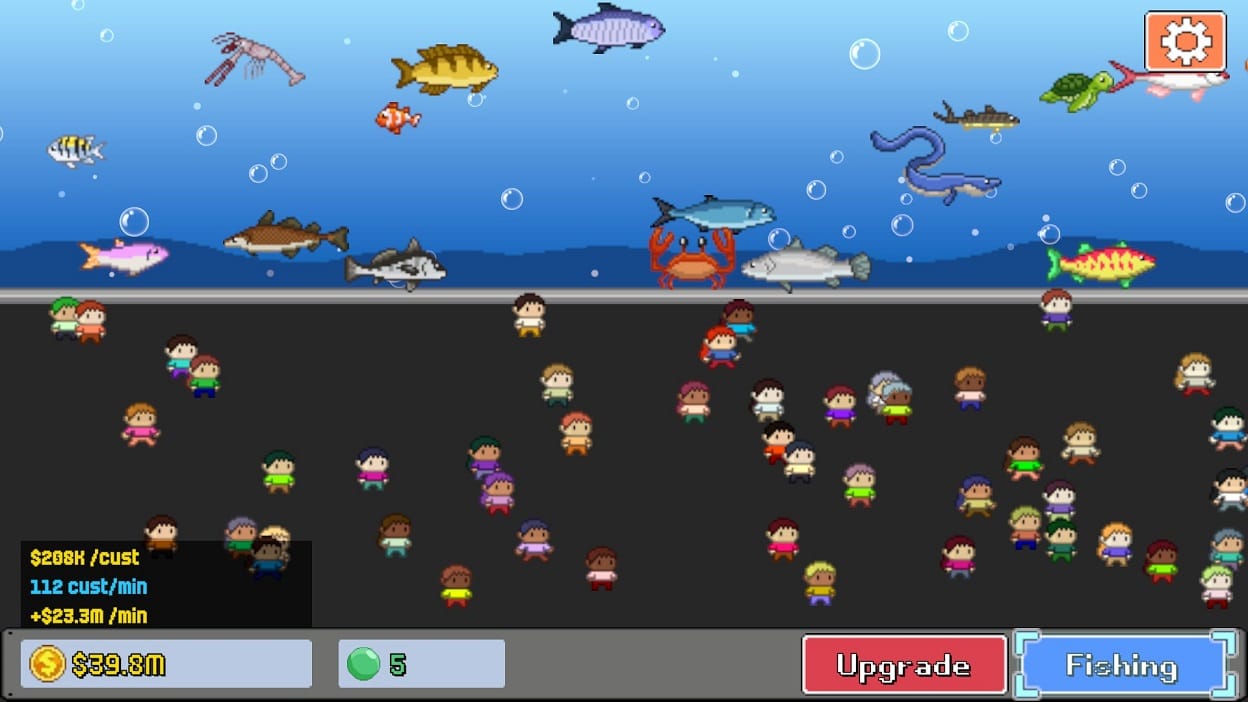
Mango's Fisharium
Mango's Fisharium is an incremental game tasking the player with stocking and operating an aquarium. It's a relatively simple example of the genre that streamlines the mechanics into a single minigame.
The gameplay shifts between two screens. On the fishing screen, the player adds to the available collection of fish through a simple minigame. The player drops a hook at one of a series of unlockable spots, then maneuvers it back and forth to catch as many fish as the weight limit allows. Each caught fish is added to the aquarium screen, where the player can spend money on upgrades or unlocking fishing spots.
All money is generated passively. Each captured fish generates an amount of income based on the level of the fish (increased by catching more of them), the level of the fishing spot (increased by catching any fish at that spot), and the number of marketing upgrades purchased. As such, the game can be fully idled if the player wishes.
The one wrinkle compared to similar games is the existence of dream pearls, one of which can be found in every fishing spot beyond the first. By resetting the game status and entering the dream world, the player can spend pearls to unlock permanent bonuses. While not strictly necessary, these greatly accelerate the later chapters of the game.
Mango's Fisharium is a fairly standard example of its genre - well produced, but without adding anything very interesting to the formula.
Mango's Fisharium is available for PC via Steam. A copy was provided for this review.
That wraps up our look at all the indie games that caught our attention in June. Be sure to come back each month for more of those sweet, sweet indie games you need to know about!
